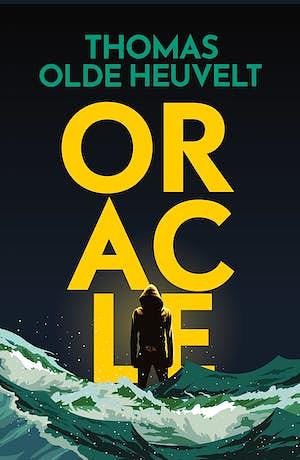The following are all in the area of environmental history: enjoy!
Rebecca Beausaert. Pursuing Play: Women's Leisure in Small-Town Ontario, 1870-1914.
Beausaert’s discussion of the growing popularity of outdoor recreation in the early twentieth century, as opposed to earlier forms of indoor leisure such as book clubs and church gatherings, also highlights the role of women in the rise of environmental activism in towns like Elora. In these communities, grassroots efforts to maintain the local environment and cater to the influx of ecotourism travelers flourished, further illustrating the agency of women in shaping both their social and environmental landscapes.
***
Robert Aquinas McNally. Cast Out of Eden: The Untold Story of John Muir, Indigenous Peoples, and the American Wilderness:
McNally’s emphasis on the role of race in Muir’s thinking, and, therefore, on his vision of wilderness preservation, helps readers more clearly see Muir not as wilderness prophet but as a man of his time coming to terms with the consequences of American expansion.
***
B. J. Barickman. From Sea-Bathing to Beach-Going: A Social History of the Beach in Rio de Janeiro, Brazil. Edited by Kendrik Kraay and Bryan McCann:
The book begins with Rio in the nineteenth century and shows that Cariocas regularly went to bathe in the ocean. The work incorporates an assortment of sources to give a vivid picture of this process. For instance, it was customary for bathers to go before dawn—as early as 3 a.m.—since many in Rio went to bed early in the evening, but also due to colorism within Brazilian society. The dominant white society enjoyed swimming in the ocean but also prized fairer complexions and thus aimed to avoid the sun. Yet, few amenities existed for sea-bathers. The city dumped its sewage and trash into the ocean and provided few lifeguards, which resulted in frequent drownings.
In chapter 2, a personal favorite, Barickman discusses the evolution of sea bathing from a therapeutic practice (thalassotherapy) in the nineteenth century to a leisure activity that provided a space for socialization across gender lines by the 1920s. Locals went to the beach to escape the heat of the summer, rowing emerged as the most popular sport in the region, and, as in other parts of the world such as the United States and the Southern Cone, beach-going became a popular way to make or meet friends. In short, the beach became a public space at all hours of the day, not just before dawn. Moreover, the beach captured the “moral ambiguities” of nineteenth-century norms (51-63). Men and women of all races and classes could be present in public spaces partially nude, to observe others and to be observed, in ways that society did not permit beyond the beach, but this continually frustrated moral reformers.
Chapter 3 centers on the work of Rio’s civic leaders to “civilize” the city in hopes of altering public perception of the city as a “tropical pesthole” (p. 69).
***
David Matless. England’s Green: Nature and Culture Since the 1960s:
The range of sources and topics is impressive, but at times the evidence is noted so briefly and the prose proceeds so quickly that breadth is privileged over depth. For example, the deeper connections between England and global ideas of green (as defined by the International Union for Conservation of Nature and the World Wildlife Fund), the influence of colonial experience on conservation events of the 1970s, and the tensions between the various governmental nature management organizations would all have benefited from a little more attention. Yet, even if the reader sometimes wishes for a slower pace to get their thoughts in order, Matless offers enough analysis to build the examples up into a clear and insightful picture. The reader is left with a general appreciation of the central environmental debates of the period and good understanding of how they evolved over time. For scholars, it is a multidimensional study that adds something new and long awaited to British environmental and cultural history. For others, it is a fascinating book filled with interesting stories, cultural context, and many moments of nostalgia.
***
Michael Lobel. Van Gogh and the End of Nature.:
Lobel makes a systematic case for a new way of seeing Van Gogh’s paintings. Carefully introducing readers to a host of environmental conditions that shaped Van Gogh’s lived experience and appear repeatedly in his paintings—factories, railways, mining operations, gaslight, polluted waterways, arsenic, among others—Lobel compellingly invites us to see Van Gogh as an artist consistently grappling with the changing ecological world around him. Color and composition, as two of Van Gogh’s most heralded painterly qualities, appear now through an entirely different perception influenced by a clear environmental consciousness.
***
Ursula Kluwick. Haunting Ecologies: Victorian Conceptions of Water:
The author sets out to consider how Victorians understood water, seen through nineteenth-century fictional and nonfictional writings about the River Thames. In chapter 2 she points out the existence of writing that emphasizes how polluted the Thames was as well as writing that never mentions the pollution, and wonders at their coexistence. The conclusion that the writings don’t relate to any real state of the river is not particularly surprising but points to the author’s overall intent, summarized in the book’s title.
***
Alan Rauch. Sloth:
Rauch views these caricatural depictions—including portrayals of sloths as docile and naive creatures, as seen in the animated film Ice Age (2002)—as potentially detrimental to the species’ well-being. Through his analysis, the author critiques how sloths have been appropriated to fulfill human (emotional, cultural, and economic) needs and how this process misrepresents sloths, leading to harmful stereotypes that diminish their intrinsic value and undermine their agency.

